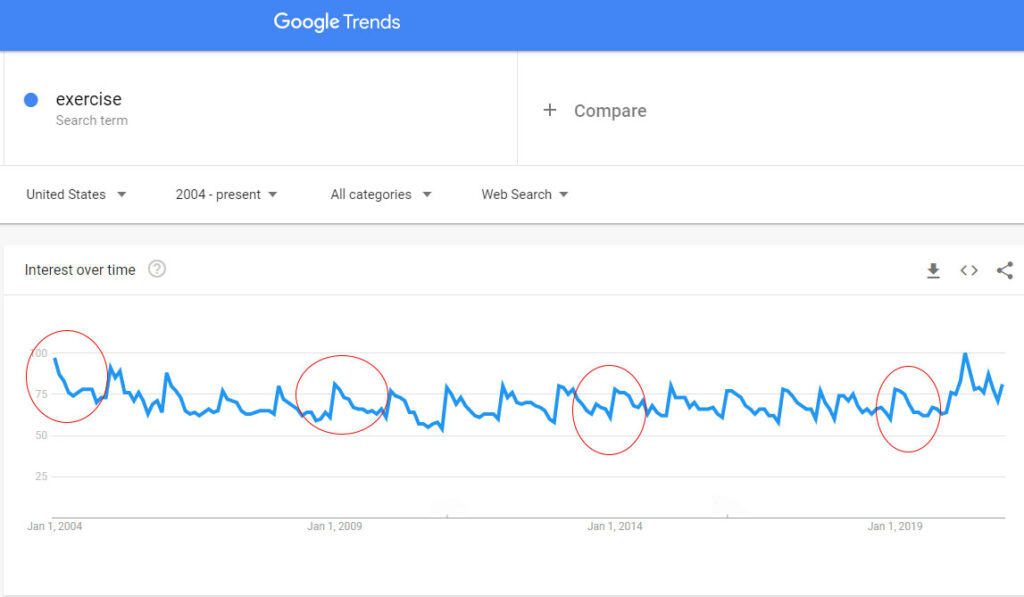Due to the COVID-19 pandemic, 2020 has been an extremely difficult year for everyone. And although we aren’t out of the woods yet, vaccinations have begun and 2021 is already starting to look brighter. No matter how trying the past 365 days have been, making and sticking to healthy New Year’s resolutions can only improve upon the next 365. In this article we are going to discuss one of the most popular New Year’s resolutions, getting more exercise. We are also going to provide you with some proactive ways to help achieve your exercise goals.
Getting More Exercise
Every New Year’s, getting more exercise is one of the most prevalent resolutions. And without discipline and willpower, It is also an easy resolution to break.

This graphic we created implementing Google Trends shows the ebb and flow pertaining to use of the keyword “exercise” within Google searches. Although we have only circled the January spikes with correlating dates beneath, each of the spikes in this graph occurred in January of that year. This is a good indication that overall interest in exercise quickly dissipates after the New Year’s bump in popularity. So, how can you rise above the data and keep your exercise regimen going throughout the year?
Start Exercising
This may seem obvious, but one of the hardest parts about starting to exercise is actually getting up and doing it. Whether you have a gym membership or prefer to workout at home, take note of dates and times you know you have available to exercise. Then set reminders using whichever medium works best for you, i.e., your cellphone or Post-It Notes. Once you get started with your workout you will probably notice it is much easier to continue it than it was taking that first step.
Set Attainable Goals
If you haven’t worked out in a while, it probably is not a good ides to set a New Year’s resolution for exercising every day of the week. Set achievable weekly or monthly exercise goals for yourself. As the year progresses you will be able to add to and adjust your exercise goals accordingly. It can also be helpful to set short term goals with long term ambitions; looking forward to the workouts you have planned for the upcoming week can motivate you, while overanalyzing whether you will be able to run a marathon next year may feel overwhelming and deter you from continuing your exercise regimen.

Anticipate and Enjoy the Benefits
Setting out to successfully take on a workout plan and bringing that plan to fruition can be extremely rewarding. Look forward to your improved physical and mental well-being, and as you begin to notice those improvements, embrace them.
Mental Health Benefits
Research has shown that exercise is not only good for your physical health, it also supports emotional and mental health. You can exercise with a friend and get the added benefit of emotional support. So, next time you’re feeling down, anxious, or stressed, try to get up and start moving!
Physical activity can help:
- Reduce feelings of depression and stress, while improving your mood and overall emotional well-being
- Increase your energy level
- Improve sleep
- Empower you to feel more in control
Physical Health Benefits
- Reduced health risks such as heart disease and type 2 diabetes
- Reduced risk for certain cancers including bladder, breast, lung, and stomach
- Helps you maintain or achieve a healthy weight
- Increase muscle strength
